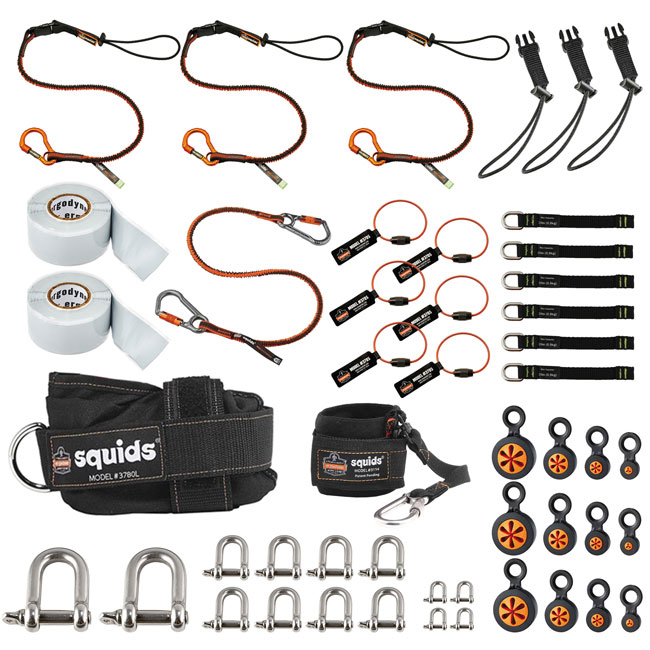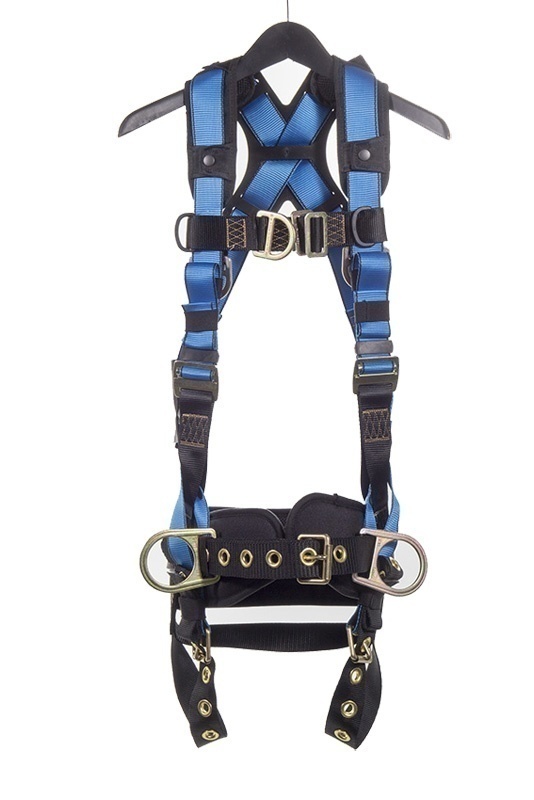YOU HAVE NO ITEMS IN YOUR CART.
Featured Brands

5 Falling Objects and Tool Tethering Tips
Tip 1: How to match max tether length with attachment choice.
For proper tool tethering solutions you not only do you have to make sure the components in your system meet the weight requirements but also the maximum tether lengths for anchorage.
All rated tool tethers will be marked with both of these numbers and should only be used with other compatible components.
Tip 2: Considering where a tool will be tethered while in use.
Often workers only consider how a tool is tethered while it’s being actively used, but less thought is given to how it will be kept while it’s not in use or during transportation while at-height. Tools are just as likely to fall during storage, in a 5 gallon bucket on a scissor lift, in tool belt pouches, or even while just being transported by hand.
There are many solutions to prevent these problems. Tool pouches with dedicated tether attachment points, retractable devices, or topped bags and buckets are all available.
Tip 3: Considering the intended motion / use of the tool.
Specially designed attachment points are available which allow tools to still be tethered while not impeding the natural intended motion or use of the tool. If a screwdriver is constantly getting bound up because the tether can freely rotate while being turned it, productivity is lost and a worker will likely just not use the intended tool tether.
Similarly if the way the tether attaches to the tool impedes proper grip or ergonomics, it’s not an effective solution. Tethers should also never be used under tension. If a worker is having to stretch the tether to the limit, they’re increasing the risk that they’ll drop a tool or potentially damage the tether or equipment they’re working on.
Tip 4: Trying to standardize a Fallen Objects Program without first standardizing your tools.
Working with a Gear Expert to standardize all of the tools on a job site ensures these problems never arise. These tools can be kitted together and arrive together for each worker, simplifying the entire fallen object prevention program for everyone.
This takes the guesswork out of how every different worker is properly tethering their tools, prevents accidents, increases productivity and safety at the same time.

Tip 5: Thinking you must stick with one manufacturer for product selection.
Just like your other fall protection kits, you have plenty of options to choose from when putting together your fallen objects program, and there may not be a perfect solution for every item you need to tether from just one manufacturer. Putting together a mix of different connectors, tethers, and anchorage points from the wide variety of solutions on the market is a great way to hone in the perfect kit for every worker and job.
The beauty of the ANSI/ISEA 121-2018 standard is that it spells out that we are allowed to mix and match products that meet the standard since they have all been tested the same way and meet the same criterias except where explicitly stated by the manufacturer.
Obviously following those manufacturer instructions is critical for any piece of equipment, but consulting with a Gear Expert to find the perfect mix of tools and kitting them for your team makes safety and compliance simple.












